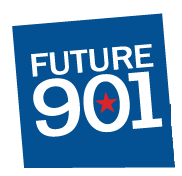We are Letting Down the Survivors of Gun Violence
Written by Robert Donati
Most victims of gun violence survive their assaults. Unfortunately, many of these individuals are left with life-altering injuries and grossly inadequate support to help them move forward.
First, according to the Memphis Crime Commission, there is a disturbing increase in the rate of violent crime in Shelby County/Memphis. The murder rate has rightfully gotten a lot of attention. In 2011, Memphis had 18 murders/100,000 people and Shelby Co had 13 murders/ 100,000. By 2021 those numbers were shockingly higher, up to 47 murders/100,000 in Memphis and 34 murders/100,000 in Shelby Co.
Unfortunately, this only tells part of the story. Left out is the ongoing damage for those that survive. Not all gun violence ends in death. In fact, as bad as our homicide numbers are, they are dwarfed by the number of people who are seriously injured by deadly weapons. Aggravated assaults (assaults involving the use of a deadly weapon) have doubled over the last decade. In 2011 Shelby County had 794 aggrevated assaults/100,000. By 2021, this number was over doubled that at 1,512. The numbers for the City of Memphis are equally horrible with 1,034 aggrevated assaults/100,000 in 2011 and an increase to 2,038.
Indeed, the world-class trauma doctors at Regional One Hospital have gotten very good at saving the lives of gun-violence victims. Unfortunately, for those with shattered bones, lost limbs, and punctured organs, having their lives saved is really just the start of a long, difficult story. Unfortunately, after preserving the victim’s life, there are minimal resources available to these victims for what needs to happen next.
1. Job Loss
Most employers in Memphis do not offer short or long-term benefits. A sizable portion of our population works in hourly positions. In the case of a “minor” gunshot wound, they are not getting paid while they are out recovering. Further, if they are eligible for FMLA leave at all, that will mean that an employer is only going to have to hold their position for six weeks before letting them go. Thus, the initial injury often turns into a financial crisis as the victim isn’t able to get back to work in time to stay employed.
2. Our System Saves Lives, but is Poor at Restoring Function
Saving lives in acute danger is very different than helping victims adapt to the permanent loss of function that often accompanies a gunshot wound. A common issue occurs after victims are released from the hospital and find that their ability to lift or stand is permanently impaired. To be sure, there is treatment (physical therapy, occupational therapy) that could assist these individuals. Tragically though, by the time a victim is healed up enough to engage in these kinds of therapy, a huge percentage of them have lost their jobs and the health insurance that comes with it.
3. New Skill Training
Equally as important is the lack of help in adapting to other work. Locally, a large percentage of our economy centers around distribution. These jobs are physically demanding. They are also not positions that provide workers with a lot of job skills that easily transfer to other less physically-demanding occupations. A forklift operator with a spinal laceration is unlikely to be offered or (without retraining) be capable of adjusting to sedentary work in an office cubical.
Vocational rehabilitation can work wonders in providing new skills to allow for training and placement for jobs that they can adjust to. For instance, when someone loses their dominant arm, there are very few jobs that they can do in the economy. However, with proper training and placement with an accommodating employer, that person can stay in the workforce and support themselves. Unfortunately, without vocational rehabilitation, the likelihood that this person would find the uncommon employment opportunities that they can do with severe work restrictions is fleetingly small.
Yet, Tennessee grossly underfunds its vocational rehabilitation program. Perversely, the only time there are reliable vocational rehabilitative services available is when the federal government pays for them after someone is found to be disabled.
4. What We Can Do To Help
There are many options to help, but they all boil down to us needing to get medical and vocational help to GSW victims. Care cannot just end after saving the victim’s life. We need to have resources available for these victims to access the physical, psychological and occupational therapy they need to return to as close to normal as they possibly can. We are blessed to have a number of providers that can offer this kind of care, but Tennessee and Mississippi needs to get resources to these victims either from a direct payment through victim’s compensation programs or by taking the billions of dollars in funding available to it to expand TennCare/Medicaid.
Similarly, Tennessee has a chronically underfunded vocational rehabilitation program. Just allocating more funding for staffing and vocational retraining would greatly help people adjust to new jobs.
The arguments over the causes of and solutions for gun violence are seemingly endless. If we cannot agree on a solution to stop this violence, we must at least agree to come together to assist the victims in not just surviving gun violence, but returning to a life where they still have a chance to prosper.
Robert Donati, Esq.
Future901 Treasurer
Certified Disability Law Specialist
Donati Law

